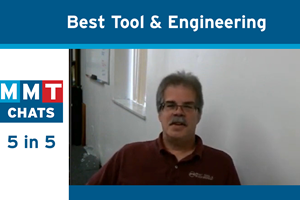Rapid Molding Process Provides Economic Alternative to CNC Machining of Components
A rapid casting process has been developed that serves as an economic alternative to CNC machining, die and investment casting, and sand casting with machining.
A rapid casting process has been developed that serves as an economic alternative to CNC machining, die and investment casting, and sand casting with machining. The process uses permanent graphite molds to produce parts from ZA-12, a zinc-aluminum alloy, with typical turnaround times of four to six weeks from finished CAD design to first article samples. For molders and OEMs, this process is a practical alternative to machining parts from blanks (high cost per part) and die casting (relatively low per-part cost but high up-front cost to machine the steel molds). And for the moldmaker, it is important to keep up with alternative technologies that can improve the manufacturing process as a whole and help you to better serve your customers.
The ZA-12 casting process from Graphicast, Inc. (Jaffrey, NH) is ideal for the manufacture of high-precision components for electromechanical and electro-optical applications, notes President Val Zanchuk.
Process Features
“ZA-12 zinc-aluminum alloy offers an excellent combination of physical properties, surface finish and low cost,” Zanchuk explains. “With approximately the same density as cast iron, ZA-12 alloy is harder, stronger and better wearing than aluminum or bronze. It machines as easily as brass or bronze and more easily than cast iron or aluminum.” In addition, Zanchuk notes that the company’s exclusive LTA auto-pour technology produces castings with dimensional stability, low porosity, and exceptional consistency with no heat treating required.
“Typically, graphite mold castings can be produced in volume with critical dimension tolerances of ±.003" per inch for the first inch and ±.001" per inch for additional inches, and surface finishes better than 125 microinches,” Zanchuk states. “Parts from the mold have a lustrous bright metal finish that in most cases requires no preparation or coating for corrosion protection. If desired, parts can be painted, powder-coated or finished with electro-coated acrylic or epoxy to simulate black anodized aluminum.”
Applications
The production of a barcode scanner optics plate provides an excellent example, Zanchuk points out. Yearly production volume was 3,000 castings. “Because of the short leadtime on this job, the customer used cast samples as prototypes—eliminating prototype costs,” he states. “Tooling costs were a fraction of those for die casting. Concurrent part/mold design and the ease of machining graphite dramatically shorten moldmaking time. And, because a graphite mold can be modified quickly and economically, it provides a much higher degree of flexibility in debugging/improving products later on, while still controlling costs—a major advantage over traditional casting methods. Also, a block of graphite costs less than a block of tool steel and requires no heat treating. Machining of boss heights, pads, holes, and other features was minimal compared to what would have been required for a sand casting of the same part. Coated with zinc chromate, the two-pound plate is used for mounting optics and electronics inside an industrial scanner that is installed on a conveyor to read barcodes on moving packages.”
“Zinc-aluminum alloy casting using permanent graphite molds provides a cost-effective means for OEMs to transition from low-volume machined components to high-volume die cast components,” Vanchuk concludes. “Ideal for volumes of 300 to 20,000 parts, it offers relatively low tooling (mold) costs and a relatively inexpensive cost per part.”
![]()
Related Content
Hands-on Workshop Teaches Mold Maintenance Process
Intensive workshop teaches the process of mold maintenance to help put an end to the firefighting culture of many toolrooms.
Read MoreExploring ISO 9000 - Part 16 Control of Quality Records
A Series of International Standards for Quality Management and Quality Assurance. We begin 2022 with a review of Clause 4.16 Control of Quality Records.
Read MoreMMT Chats: 5 in 5 with Best Tool and Engineering
MoldMaking Technology Editorial Director Christina Fuges reveals 5 best practices for improving efficiencies within shops...in 5 minutes. Our guest is Joe Cherluck, President of Best Tool and Engineering in Clinton Township, Michigan. This episode is brought to you by ISCAR.
Read MoreWhat is Scientific Maintenance? Part 2
Part two of this three-part series explains specific data that toolrooms must collect, analyze and use to truly advance to a scientific maintenance culture where you can measure real data and drive decisions.
Read MoreRead Next
How to Use Continuing Education to Remain Competitive in Moldmaking
Continued training helps moldmakers make tooling decisions and properly use the latest cutting tool to efficiently machine high-quality molds.
Read MoreAre You a Moldmaker Considering 3D Printing? Consider the 3D Printing Workshop at NPE2024
Presentations will cover 3D printing for mold tooling, material innovation, product development, bridge production and full-scale, high-volume additive manufacturing.
Read More










.jpg;maxWidth=300;quality=90)
_300x250 4.png;maxWidth=300;quality=90)










